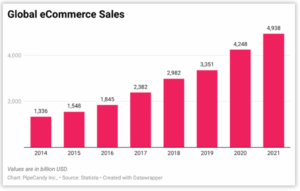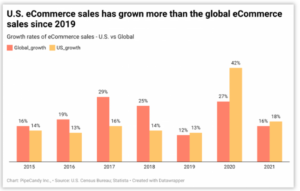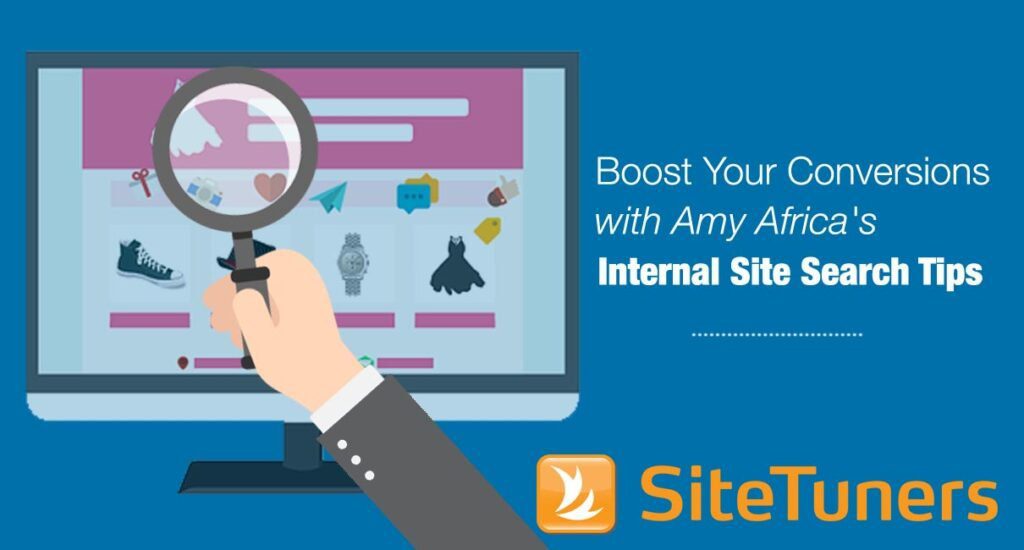Summary: The pandemic has been challenging for businesses and companies worldwide. Lockdowns affected how customers made purchases during the pandemic in the e-commerce industry leading to an encouraging e-commerce scenario. A report published by Adobe in 2020 showed how the pandemic accelerated e-commerce growth by 77%.
The situation led many companies to experience excellent e-commerce sales during this period creating an expectation to keep this trend for a while. Lockdowns had a significant impact on the way consumers considered essentials. Travel-related goods, clothes, and shoe consumption decreased, and home offices increased electronic purchases by 12%. Garden, workout, and kitchen equipment became a must-have for most homes. The pandemic changed many aspects of e-commerce and significantly impacted how businesses used to work and engage with customers.
In this article, we will discuss how the pandemic affected the e-commerce industry in 2020.
1. Sales Increased
There is no question that e-commerce, including online shopping, curbside pickup, and food delivery, assisted businesses in surviving the pandemic. 2020 was a significant year for e-commerce sales around the world. Many traditional companies had to reassess their business model, developing new technological skill sets to face an increasing demand for online sales.
This graph shows a boost in online retail sales from the pandemic measured by governments worldwide. The sales volume increased worldwide from 2019-2020. Likewise, there was a significant positive impact on the forecasted 8% global increment in retail e-commerce sales projected until 2024.
Sectors like B2B e-commerce (Business to Business) followed the same sales increase pattern due to the adaptation of customers to the online interface. The B2B merchandise value grew at the same steady rate in 2019 to mirror its B2C (Business to Customer) counterpart. We can see a 13% increase from 2013 to 2019. These studies show how businesses and companies saw a very significant rise in their sales through digital channels.

The worldwide e-commerce market has more than quadrupled in the previous seven years. The pace of growth will fall to 14% in 2021.
The surge in US e-commerce, the second-largest market in the world, was astonishing.

Until 2018, the US e-commerce market has been expanding more slowly than the worldwide market. Since 2019, the US e-commerce industry had grown faster than the worldwide e-commerce market, a trend that had persisted through the previous year, when e-commerce growth rates, both global and countrywide, more than doubled.
During the pandemic, the e-commerce industry witnessed tremendous growth. Restrictions that made it necessary for individuals to stay indoors prompted them to embrace shopping online more than before. Individuals became more familiar with online sales and better delivery options.
Factors like accelerated digitalization made many customers learn how to shop online, upscaling the demand in industries such as restaurants, healthcare, department stores, and electronics. This quick adaptation to online purchases represented this rapid and unexpected surge at a level only seen in the holiday season. This impact on online sales created an assumption that this trend would stay over time.
2. Buyer Persona Suddenly Changed
To increase sales and enhance customer experience, it is strategically advantageous to understand your buyer profiles and customer path. There is no “generic customer” when it comes to e-commerce. Buyer personas enable you to better understand your consumers’ pain points, desires, and demands. They allow you to make smarter decisions that ripple across your entire business. Researching and gathering information to build your buyer personas will increase their effectiveness in sales and services in trying times.
Prior to COVID, it was critical to keep up with changing customer requirements and behaviors in order to develop buyer personas over time. But when the pandemic hit, most of the habits and interests of customers changed dramatically. The normal purchase patterns changed, demonstrating to marketers that buyer personas and customer journey maps had to be re-evaluated to be relevant to consumers during the pandemic. One of the critical factors to determine the buyer persona was that many customers were paying closer attention to their spending.
Consumers’ new goals and behaviors became established patterns as the months passed and the economy evolved, and these patterns created new buyer personas. The redefinition of consumers’ goals was uncertain because the marketers didn’t know what to expect from lockdown measures. Keeping the momentum was the most challenging issue for companies as they had to move quickly from in-person to virtual. Companies that were able to drive these changes over time during the pandemic experienced the best results.
Consumers were restricted in where and when they could spend their money throughout the epidemic. According to McKinsey, 51% of US customers wanted to spend and engage in “revenge spending” once the pandemic had passed.
3. New Product Category Trends
The pandemic had an impact on the e-commerce industry in regard to product category trends. According to the U.S. Department of Commerce’s quarterly data, e-commerce sales in the United States increased by more than 30% in 2020 compared to 2019. Customers had to trust internet shops for their consumer necessities due to the coronavirus epidemic and statewide lockdowns.
Online food shopping was a big success story for items during the pandemic. In the early months, it took off and dominated the scene. In 2019, 81% of US consumers had never purchased groceries online. The raise in online grocery purchases was evident, 79% of people used digital channels in 2020.
During the pandemic, home goods and exercise equipment reached new heights, because many people dealt with anxiety and a lack of workouts at home. People also sought out new hobbies and pastimes to keep them occupied and engaged when they were confined at home. As pandemic lockdowns swept the country, sales of musical instruments and literature skyrocketed in the second quarter of 2020. Although experts believe that these categories will revert to pre-pandemic levels as gyms and outdoor spaces reopen.
As more individuals desired to buy basics online, it created new opportunities for new businesses to arise and extend their digital presence and increase their reach in a more varied e-commerce environment.
4. Media Consumption Boom
During COVID-19, media consumption soared. The amount of time spent watching streaming video material on Netflix, Hulu, and Amazon in the afternoon has increased by more than 40%. Cable news stations have claimed record viewership, notably Fox News, CNN, and MSNBC. And Facebook engagement increased by 20-70%. Lockdowns were a big opportunity for big media brands to reach a wider audience. Creativity in marketing campaigns was essential to capture the attention of target customers.
Brands had a hard time in their struggle to send the right message to their target audiences and stand out in a saturated market. Platforms like Instagram, YouTube, and Twitter allowed companies to interact with their customers while also marketing their products with innovative new concepts and campaigns.
On-line games like Twitch increased by 23% in March, with consumers spending an astounding 1.3 billion hours on the famous video streaming service. While not as popular as TikTok, Facebook is the world’s largest social media network and remained popular with older individuals who were more lonely than ever during COVID-19. March 2020 activity on the platform increased by 20-70%.
According to a December 2020 poll results, Millennials reduced their media usage from earlier in that year. Books and podcasts were the only two categories that Millennials were more interested in during this time period. Probably, staying long hours at their home office and gazing at bright screens increased their preference for podcasts and books.
5. Customer Service Adaptation
We’ve all heard how important customer service is for retaining customers and growing a business. Customer service is the power of a company to turn a stressful and frustrating experience into something good for customers through its representatives. That is the power of good customer service: it determines where your clients’ loyalty begins and ends.
Customer service has been significantly impacted by COVID, as has the rest of our society. One of the most significant challenges companies’ customer service faced was adjusting to a fully remote setup. Suddenly, thousands of customers found themselves struggling to get customer service as companies try to connect and solve their demands at the same time. As customer expectations increased, just responding to comments and messages was no longer sufficient. Customer service requirements during the pandemic changed quickly, forcing businesses to keep ahead of the curve and anticipate.
As new trends in products and services were arising, businesses had to actively listen and make the proper changes to suit emerging client expectations, as well as identify unique methods to communicate with them. The challenge was to adapt all the pre-pandemic approaches to customer service. The essential focus was to adjust the attitude and company offerings as businesses discovered new methods to serve. It has been a bit of a ride for most companies!
Keeping the loyalty of customers was the main goal of all customer service efforts during the pandemic. Companies took a step further to embrace empathy and human connections. Asking consumers how clients are doing may be as basic or as sophisticated as slowing down difficult encounters and giving customers step-by-step guidance. Essentially, companies strived to make customers feel like they are a member of the family in order to keep them loyal.
Conclusion
The pandemic represented a major challenge for e-commerce industry worldwide. Your business success starts when you recognize these changes that came with the pandemic are here to stay. The growth in sales and profits was unusual for most businesses and that means it’s imperative to continue learning. The only way your business can stay on top is to adapt to the changes that COVID brought.


